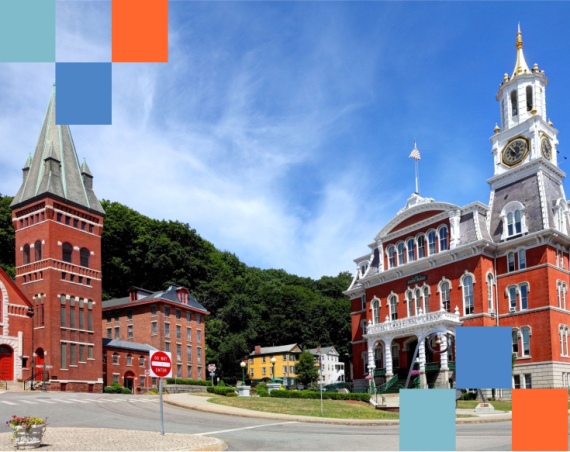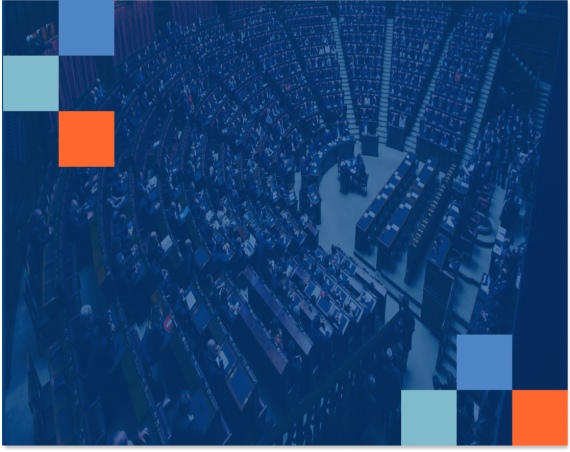Housing is a basic human right. Yet it is also a common struggle for communities around the world. Affordable housing has implications for personal safety and wellbeing, access to employment opportunities, and general economic purchasing power. The United States is facing widespread housing challenges from availability to affordability which is putting significant strain on communities across the country. From driving people away to creating stressful living situations for residents, these challenges make it difficult for local governments to sustain, and engage with, a populous and diverse community. Today, the pressure is on for local governments to develop affordable housing strategies in their communities.
What are the challenges of addressing the affordable housing crisis?
Housing is considered affordable if it consumes less than 30% of a household’s income. Historically, that was well within reach for the majority of Americans. But today with the average cost of housing hovering around $1 million in the United States, it seems we’re far from affordable housing availability.1 The burden of high-cost housing creates problems downstream for families to afford even simple day-to-day expenses such as food and transportation, let alone health care and retirement. As you can see in the graph below, there is also a stark growing divide between the rate of increase in housing prices versus income, which crowds out lower income workers or forces people to spend a higher percentage of their income on rent.2 Ultimately, this diminishes cities’ ability to attract and retain diverse talent that can contribute to sustainable futures.
What can local governments do to mitigate this deep-rooted housing crisis?
Enter: community engagement for housing strategies
Housing issues are complex and require a mix of long-term planning and short-term mitigation. Through community engagement you can begin identifying and addressing community needs and realities, painting a clearer picture for local leaders and helping them to prioritize between solutions. Whether you are looking to create a housing affordability action plan, zoning ordinances, or address Not-In-My-Backyard head on in your housing planning, including your community in the conversation is essential to building the path to stronger and more equitable housing solutions that have the support of your residents and stakeholders.
So when, and why, should local governments engage with their communities while crafting their housing strategies?
First up, why is it important to engage with your community when developing your local housing strategy?
As public officials, ensuring that your local housing policies take into account the diverse needs in your community should be a constant priority. How can you make housing more affordable? How can you make sure there is enough housing for your community? Answers to these questions can include everything from long-term initiatives such as incentives on affordable housing developments to specific proposals such as income caps and updating exclusionary zoning bylaws.
Take zoning as an example. Historically, zoning policies have played a significant role in building the racial disparity in America’s housing by heavily restricting the type of housing allowed in many communities. They have excluded large portions of the African-American population from affordable, desirable housing and subsequently hindered their economic growth. But now, with the passage of the American Jobs Plan, communities are being encouraged with incentives to reform these exclusionary policies through community engagement. By identifying the areas of the community that need zoning reforms, local governments can then tap into collective intelligence to create better policies and ultimately better, more affordable housing.
To make sure you are approaching these issues in an inclusive and equitable manner, it is necessary to gather ideas and feedback from your community – the very people most impacted by these policies and programs.
Look at the City of Lancaster, which has a deep culture of engagement and is now using their digital community engagement platform to create their new comprehensive plan together with their community. One of the plan’s main priority areas is housing, and the city is inviting ideas and feedback through their Engage Lancaster platform to guide the city’s development with what matters to the community.
Building trust is also essential to developing housing strategies that have buy-in from your community to help you avoid conflict and delays. With a centralized platform to post project updates and hear more community voices, your residents will have more faith that your housing strategy has everyone’s best interests in mind which ultimately creates a much smoother and more inclusive process.
There are many ways you can go about engaging with your community, including adopting a digital platform. Read here how a civic engagement platform can help you engage with your residents.
When is it important to engage with your community in your housing planning process?
There are three key stages in which you can harness the collective intelligence of your community to ensure your housing strategy is inclusive, equitable, and durable.
- Assessment. With so much at stake and so many policies to consider, it can be difficult to know where to start on housing strategies. Start with your community. When evaluating what your community’s housing priorities are, it is essential to ask for input from the very beginning. The people living in your community will be able to provide a unique range of perspectives and concerns through surveys, ideation discussions, or online workshops that could unearth new key localized housing strategies. And by asking for this input upfront, you will create a shared community understanding of the process and work to come.
- Creation. Now that you’ve determined your key focus areas, it’s time to go to work. As you work with your team and partners to create the strategies themselves, don’t forget to continue to engage with the community. Want feedback on sections of your plan? Break them down and ask for comments and ideas to improve them. Creating plans can be long and arduous, so having intermittent check-ins during the process can help you ensure that you’re on track.
- Implementation. While creating your strategy with your community, you’ve also been building trust with them. This will be crucial once you reach the implementation phase. Housing projects have the potential to create significant inconveniences in your community. From roadblocks to construction noise that can often last a long time, you’re bound to face disgruntled residents. But by engaging with your community throughout, either with timeline updates or simply by providing a centralized place for people to voice their concerns, you can cut through this noise and build continuous support in your community. Increased transparency during implementation can help avoid extra costs, long-term delays and ensure your housing solutions reach your community quickly and effectively.
By embracing community engagement during these three key phases, you will be on track to developing housing strategies that will help you achieve the goal of safe and affordable housing for your residents. See if a CitizenLab platform can help you reach these goals.
Want to learn more about how community engagement can help you build more inclusive strategies? Check out some of our other resources:
- Guide: Engaging your community in urban development
- Blog: Inclusive community engagement examples: 6 good practices
- Blog: How community engagement teams give local governments a competitive advantage
1Claudio, Andre. “Nearly 500 US Cities Have Average Home Prices of $1M.” Route Fifty, Route Fifty, 9 Mar. 2022, https://www.route-fifty.com/finance/2022/03/nearly-500-us-cities-have-average-home-prices-1m/362948/.
2 Dickler, Jessica. “Home Prices Are Now Rising Much Faster than Incomes, Studies Show.” CNBC, CNBC, 10 Nov. 2021, https://www.cnbc.com/2021/11/10/home-prices-are-now-rising-much-faster-than-incomes-studies-show.html.






